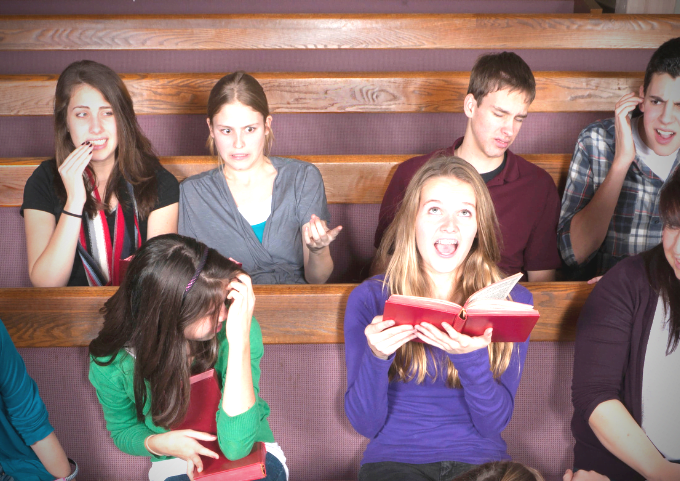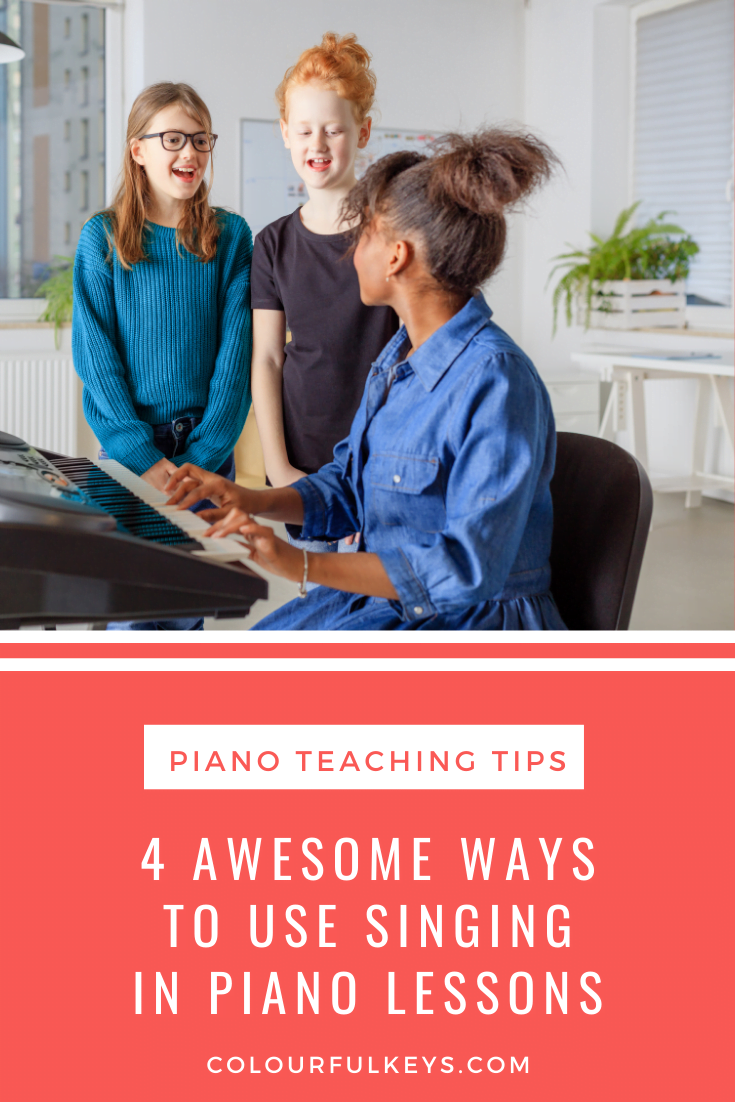Singing in piano lessons can be one of your most valuable teaching tools. It can help you to correct, guide and encourage your piano students. However, singing in the piano studio is often relegated to aural exercises.

That’s how I started, too: using solfa for sight singing just because my piano students needed a way to get through the singing test in their piano exams. This took a big weight off my students’ shoulders when it came to exam day.
Slowly but surely, I began singing more and more in all areas of my piano teaching. Singing can enhance practice, train the musical ear, and provide a greater understanding of music in general.
The content in this post was originally published in February and July of 2017, then revised and updated in July 2021.
The Benefits of Singing
As a student, I thought that sight singing exercises were the most embarrassing and evil entity to ever cross the face of this earth. Well, pretty much anyway.

As a teacher, however, I’ve come to see the value not just in sight singing, but singing in general. I forced myself to sing in front of my students until I got really comfortable with it. You know, fake-it-’til-you-make-it style.
I started singing along with their pieces more often and encouraging my students to sing as part of their learning process.
And I’m glad I did, because there are more benefits than I had even realised.
Practiced singers are better at:
- Understanding note relationships
- Identifying scales and key signatures
- Note reading
- Recognising patterns
- Sight reading
- Playing musically and artistically
- Understanding music theory
Over time, I’ve found more and more uses for singing in piano lessons. I hope you’ll consider these four key ways in which singing can actually help you to teach.
Visit my hub page devoted to all-things-music-theory for more fantastic tips, tricks, and resources you can use in your studio.
1. Reading assistance
Singing along with your students as they play can be a fantastic way to boost their reading confidence, especially in the beginning stages.
You could sing using the song lyrics, solfa syllables, intervals, Kodály rhythm syllables or even just basic vowel sounds. I often like to encourage directional reading by singing up, down and same with my beginner students.

Why is this helpful?
Well, beginning students are not yet confident in their own ability to read accurately. Even when they are playing correctly, they might not be sure that they are.
This is why it’s so helpful for them when teachers sing along. If we’re singing the same pitch they’re playing, then they know they’re right. If they hear a difference, they know to double check that note.
The other benefit is that we don’t need to verbally correct as often. When we sing along with a student’s playing, she has more opportunities to self-correct. This makes the whole experience more positive and affirming (rather than feeling like criticism.)
Of course, we need to be careful when using singing in the piano studio as a reading aid – we don’t want it to become a crutch. But with careful use, this can be a wonderful addition to your teaching toolkit.
2. Memory aid
I use singing as a memory aid all the time when I’m teaching rote pieces in piano lessons. Singing along is one of the best ways for young beginners to remember a piece without notation.
It’s not just for beginners, though. Singing can also be a wonderful tool for more advanced students who need to memorise a piece. By creating lyrics or scat singing with their piece, students have another form of association to call upon when playing pieces from memory.
Try using singing to help your students memorise and learn by rote. You’ll be surprised at the difference it makes in the strength and reliability of their memorisation.
3. Rhythm correction
I often sing Kodály syllables while my students play. This is a much gentler way to correct the rhythm than counting, or pointing out where they’re going wrong.
Singing rhythm like this is also much more musical. It helps students feel the rhythm rather than overthink it. It’s all well and good for students to understand note values and time signatures, but rhythm is something we feel – not something we think.

This is why many teachers find it useful to teach rhythms using lyrics or made up words. Personally I prefer the Kodály syllables because they can be universally applied by students, but both approaches have their merits.
4. Aural training
I’ve left this for last not because it is the least useful or valuable of the uses for singing in the piano studio, but because it is already the most common application.
As I mentioned before, I initially got into using solfa in piano lessons simply because it was a component of piano exams. But it quickly expanded to a core element of my teaching.
Solfa singing is no longer just a skill to try to cram in before exams. It’s also extremely valuable for improving piano students’ pitch awareness and ear training more generally.
Try integrating these singing exercises as a part of your weekly lessons:
- Singing echoes
- Call and response
- Interval practice
- Folk songs
- Rounds or cannons
- Melodic dictation
Even just a few minutes at the start of each week’s lesson could make your students into singing and aural superstars.
How much do you use singing in your teaching?
Are there other ways you and your students use singing in piano lessons? Share your thoughts in the comments below or in the Vibrant Music Studio Teachers Facebook group.

I have never heard of “Kodály” syllables. What are they? 🙂
Like “ta” for crotchet/quarter notes, “ti” for quavers/eighth notes. They may be referred to under another name also. 🙂
I use singing a lot in lessons. I do find that the kids are very often too shy about singing altho I continue to encourage them. An adult student who will whistle instead of sing found that if he couldnt tell if the next note was up or down by memory, that he could tell if he whistled it! Thanks for this article!
Students can be shy at first alright – but I think once they hear my less than amazing voice, they relax a bit. 😀
Oh, I like the whistling idea! Sometimes when people whistle they actually lift their head or chin when they go higher! That’s a great idea, Kim. Thanks for sharing it!